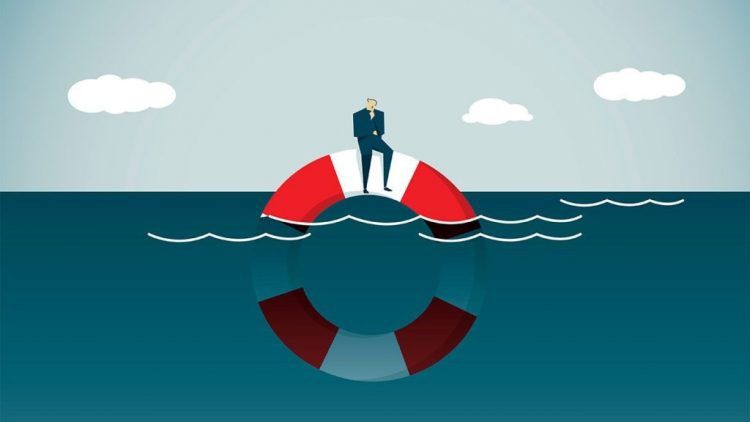If a Company Goes Bust Who Pays Redundancy? Legal Insights for UK Worker
If a Company Goes Bust Who Pays Redundancy? Legal Insights for UK Worker
Blog Article
Examining the Interplay Between Business Redundancy and Organizational Versatility for Future Development
In the dynamic landscape these days's company globe, the complex relationship between firm redundancy and business adaptability emerges as an essential variable for continual growth and success. Companies frequently face the difficulty of striking a fragile balance between maintaining a degree of redundancy to mitigate risks and promoting flexibility to react promptly to the ever-evolving market needs. This fragile interplay holds the essential to not only making it through in rough times but likewise flourishing despite uncertainty. As we discover the multifaceted measurements of this interplay, appealing insights into how companies browse these complexities to lead the way for future growth await.
Relevance of Company Redundancy
Firm redundancy is an important aspect that improves organizational strength and alleviates operational threats. By integrating redundancy measures within the business framework, firms can better endure unexpected disturbances and changes in business setting. Redundancy serves as a calculated buffer, allowing business to adapt and react effectively to unforeseen difficulties without compromising crucial procedures.
One trick facet of the significance of firm redundancy is its function in ensuring continuity during times of situation. When confronted with abrupt adjustments or emergency situations, repetitive systems, sources, or personnel can tip in to keep vital features and stop prevalent disturbances. This continuity not just safeguards the company's reputation and customer trust fund but likewise minimizes economic losses and operational downtime.

Strategies for Organizational Flexibility

An additional essential technique is buying modern technology and infrastructure that can support flexibility and scalability. Executing electronic devices, automation, and information analytics can streamline operations, boost effectiveness, and give important insights for informed decision-making. Additionally, producing adaptable business structures that allow for quick changes to market dynamics and customer demands is necessary for staying competitive in a rapidly evolving atmosphere. By proactively identifying potential disruptions and possibilities, companies can proactively thrive and adjust in an ever-changing organization landscape.
Harmonizing Redundancy and Adaptability
Achieving an unified balance between functional redundancy and business flexibility is vital in browsing the complexities of a vibrant business environment. Striking the ideal balance in between redundancy and versatility is a delicate procedure that calls for a deep understanding of the organization's goals, industry characteristics, and risk tolerance.
To attain this balance, firms need to conduct regular evaluations of their procedures to recognize areas where redundancy is necessary for threat mitigation and where versatility can drive development and growth. Executing flexible frameworks, fostering a society of continuous understanding and improvement, and motivating open communication across all levels of the company are vital techniques to balance redundancy and Home Page flexibility properly. By lining up these two vital aspects, companies can position themselves for lasting development and success in an ever-changing service landscape.
Study on Adaptation Success
In examining instances of successful organizational adaptation, it comes to be evident that the interaction in between operational redundancy and flexibility is a defining aspect in shaping resistant companies. A DVD rental service, Netflix showed exceptional versatility by transitioning right into a streaming platform when digitalization disrupted the industry. These situation researches emphasize the value of operational redundancy combined with organizational click resources flexibility in fostering long-term growth and competition.
Structure Resilience for Future Growth
Structure strength for future development requires a calculated positioning of functional procedures with market dynamics and emerging fads. Firms must adapt to changing atmospheres by cultivating a society of flexibility, development, and continuous improvement. Durability entails not only recovering from troubles but additionally proactively preparing for future challenges. One essential facet of building strength is purchasing durable risk administration strategies to reduce prospective disruptions. This includes situation planning, diversifying supply chains, and developing contingency prepare for numerous contingencies (who pays redundancy money).
Additionally, fostering solid connections with stakeholders, such as consumers, staff members, suppliers, and the community, is crucial for keeping and weathering unpredictabilities trust fund and assistance throughout stormy times. Reliable communication and openness play a crucial role in building resilience, as they assist straighten expectations and help with cooperation in navigating unpredictabilities.
Furthermore, organizations require to prioritize learning and growth efforts to upskill employees and furnish them with the required devices to adapt to changing scenarios. By buying their workforce, companies can boost their versatility and agility, eventually strengthening their resilience for lasting future development.
Conclusion

In the vibrant landscape of today's business world, the detailed connection in between company click to read more redundancy and business flexibility emerges as a crucial variable for sustained development and success. Companies frequently deal with the difficulty of striking a delicate balance in between keeping a degree of redundancy to mitigate risks and cultivating versatility to respond quickly to the ever-evolving market needs.To attain this balance, firms need to conduct routine analyses of their operations to determine locations where redundancy is needed for threat reduction and where flexibility can drive technology and development.In final thought, the interaction in between company redundancy and business adaptability is important for future development. Structure durability with a combination of redundancy and flexibility will guarantee that business are prepared for the challenges of the future.
Report this page